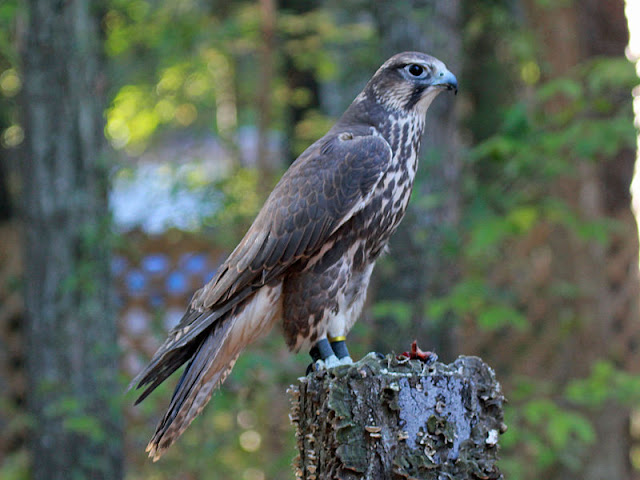Saker falcon, A bird hunted by Arab sheikhs.
The Saker falcon
The saker falcon is one of the rarest birds in the world. Despite the fact that it is under protection, listed in the International Red Book as an endangered species, the hunt for this bird continues.
"Saker falcon" by "DickDaniels" is licensed under CC by Attribution-Share Alike 3.0 UnportedIt's all about the hunting qualities of sakers, which they have no competitors. That is why these birds are so appreciated by the followers of falconry, especially well-developed and popular in our time in the Arab countries leading to falcon been hunted by sheikhs for entertainment.
Despite the fact that nurseries for breeding and rearing saker falcons have opened in several countries, including Russia,falconers appreciate those birds that were born in the wild. Therefore, for the sake of earning money, poachers take chicks from their nests and sell them to rich falconers. Unfortunately, the fight against chick miners is not very effective yet, because there is a lot of money in this business.
A trained saker falcon on the black market costs up to $ 100 thousand, an untrained bird-about 20 thousand. Up to 80% of birds die during training. A trained bird becomes attached to a person and this is very much appreciated among falconry enthusiasts.
So what kind of unique bird is the saker falcon?
- The saker falcon (Falco cherrug) is a bird of prey in the Falconidae family
- The name of the bird comes from the Turkic balaban-big or balban-wrestler, strongman
- There are 6 species of Saker falcons in the world: common, Siberian, Turkestan, Mongolian, Altai, and Aralocaspian.
- 90% of the saker falcon population breeds in Asia.
- There are from 7 to 13 thousand breeding pairs in the world, of which approximately 2 thousand nest on the territory of Russia.
- Approximately 60-70% of Russian saker falcons breed in the steppes and forest steppes of Southern Siberia — the Krasnoyarsk Territory, the Republic of Tyva, and Khakassia. Saker falcons can also be found in the Pre-Baikal region, Transbaikalia, and in the Crimea.
- On the border of Tyva and Khakassia, there is a unique population of dark-colored saker falcons.
- The saker falcon can hunt from the air or by waiting for prey on a crouch. They can harass their prey with a chase or ambush their prey while sitting or even lying down in the grass.
- The saker falcon's flight speed at the time of hunting can reach 200 km/h.
- The saker falcon's diet includes small rodents, small birds such as pigeons or gulls. However, the saker falcon can easily handle larger prey, such as drophs or pheasants.
- The saker falcon is the only falcon that can get a gazelle.
- The saker falcon's hunting area is approximately 20 km long.
- The saker falcon never goes near the nest. This is used by small birds nesting nearby. Their nests receive a kind of protection from other predators.
- Saker falcons don't build their own nests. Most often, they occupy abandoned nests of crows, barrows, eagles or other large birds. In nature reserves, saker falcons are given special artificial nests ( you can see one of them in the photo).
- There are usually 3-5 eggs in a clutch. The clutch incubates for 40 days mainly by the female.
- For the first 1.5 months, the chicks live in the parent nest. By the age of 2 months, they are already flying well and starting an independent life.
- Adult birds can stay for the winter in their breeding range. Young animals always migrate to other regions. During migration, the birds fly up to 400 km per day.
- The saker falcon lives in the wild for 18-20 years
- The Saker falcon is the national bird of Hungary
In Russia, in the Republic of Altai, Khakassia and Tuva, a program is underway to restore the saker falcon. To do this, chicks born in nurseries at the age of 20-30 days are transplanted into the nests of wild birds. Wild saker falcons accept "foundlings"and in the future, the chicks adapt and learn all the tricks of independent life in the wild. Every year, in this way, 10-20 chicks of the Altai Saker falcon are released into the wild.
We were lucky to have the opportunity to observe a family of saker falcons in the Daursky Nature Reserve. We did the first shoot when the chicks were still very young, and then we saw saker falcons-teenagers.


Post a Comment